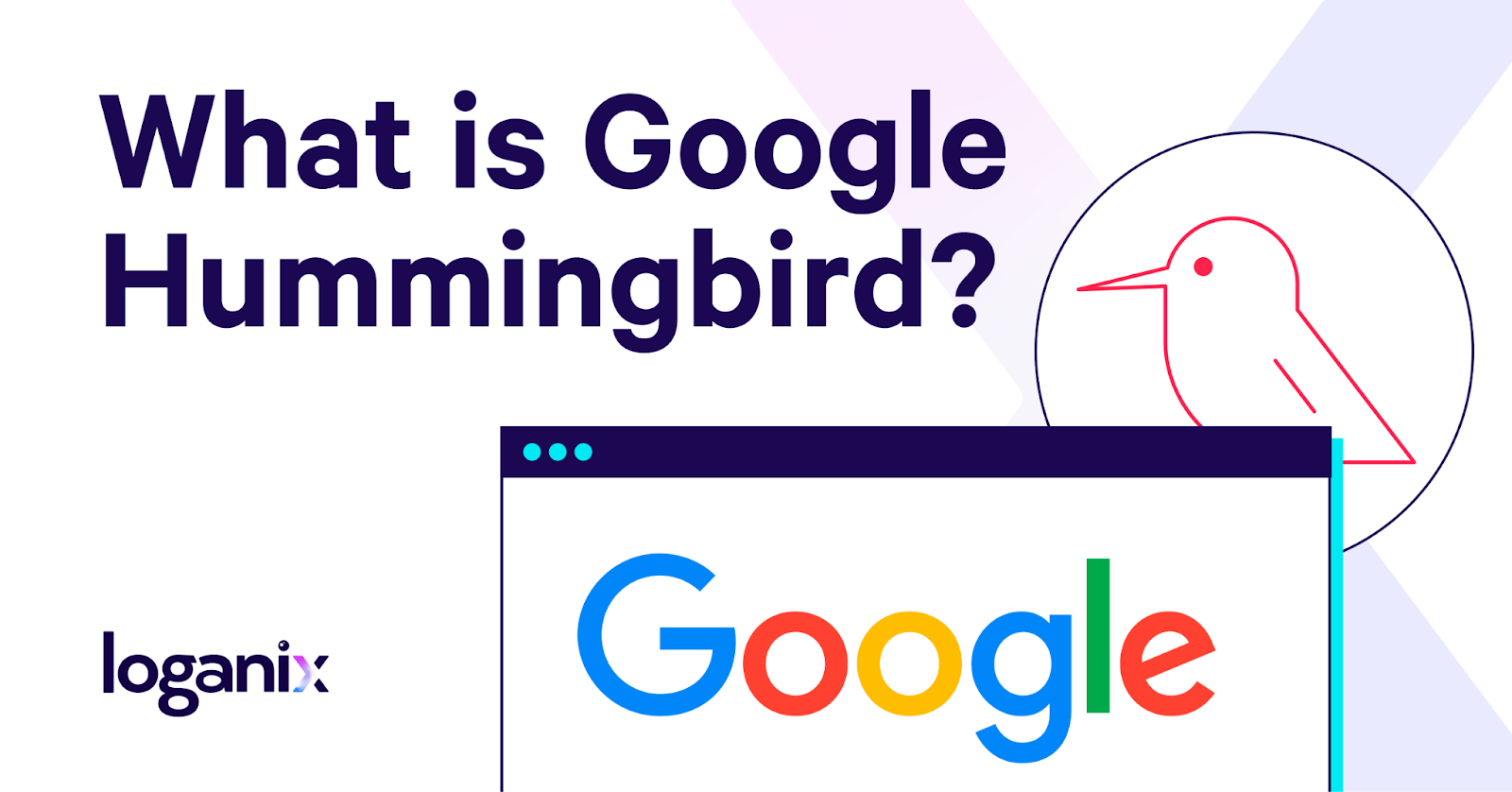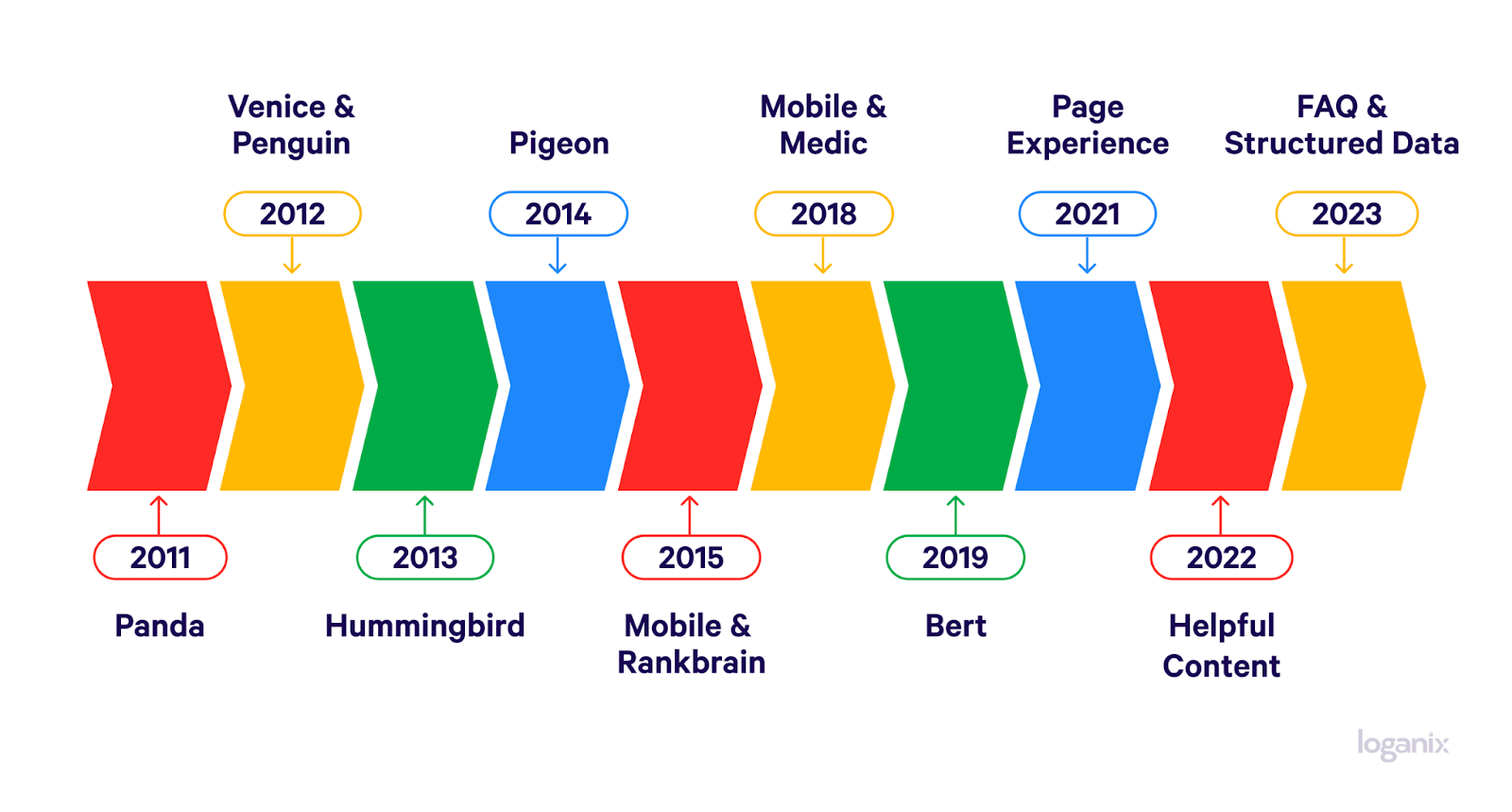What is Google Hummingbird? How It’s Shaping Modern SEO

Hand off the toughest tasks in SEO, PPC, and content without compromising quality
Explore ServicesGoogle Hummingbird wasn’t merely an update—it signified a groundbreaking shift in how Google interprets our searches. Representing the most profound alteration to Google’s core algorithm since its inception, the impact of the Hummingbird algorithm is still felt today, even a decade later.
Given its lasting impact, let’s get you up to speed. To do so, here, we
- define “What is Google Hummingbird?”,
- break down its impact on search engine optimization (SEO),
- and discuss how the Google Hummingbird update continues to shape modern SEO strategies.
What Is Google Hummingbird?
Google Hummingbird update stands out as a pivotal moment in search history. Before Hummingbird, Google’s primary focus was on matching keywords from user queries to content on web pages. However, with the rise of voice assistants and the increasing complexity of user queries, there was a pressing need for a more sophisticated approach.
Enter the Hummingbird algorithm.
Unlike previous updates like Google Panda and Google Penguin, which were more about refining existing algorithms, Hummingbird was a complete overhaul. It was designed to better understand the intricacies of human language and the intent behind search queries.

Learn more: Interested in broadening your SEO knowledge even further? Check out our SEO glossary, where we’ve explained over 250+ terms.
Why Is Google Hummingbird Important?
Now we understand the “what,” let’s dive into why these changes were so important to SEO and content marketing as a whole.
Embracing Semantic Search
Before Hummingbird, Google’s primary method of understanding queries was through keyword matching. This approach, however, had its limitations, especially as the nature of search queries evolved.
Hummingbird was Google’s transformative answer. Instead of just focusing on individual keywords, this algorithm delves deep into the broader context of a query. This emphasis on semantic search meant that Google could better interpret the context of a query rather than just matching it word-for-word. For instance, searching for “best places to eat pizza nearby” would yield results based on the user’s location, the word “best” indicating quality, and the context of wanting to eat pizza.
Paving the Way for Mobile and Voice Searches

With the rise of mobile devices, voice assistants, and voice search, conversational search has become more prevalent. Hummingbird was crucial in ensuring that Google could accurately interpret and cater to the search intent behind these long-tail and natural language queries. This evolution made Google more accessible and user-friendly, adapting seamlessly to the diverse ways people chose to search.
Enhancing the Knowledge Graph

Google’s Knowledge Graph, a system that understands facts about people, places, and things, was further enriched by Hummingbird. The algorithm introduced new comparison and filter features on the SERPs, making the Google search experience more dynamic and interactive.
Hummingbird’s Impact on SEO
As you can probably guess at this point, the introduction of the Hummingbird algorithm has had a huge impact on SEO—a fact that simply can’t be understated. So much so that Matt Cutts previously stated that Hummingbird had an effect on no less than 90 percent of searches.
Specifically, here’s how Hummingbird reshaped SEO strategies.
Emphasis on High-Quality Content
Content is king, and Hummingbird made it even more evident. With its ability to understand the context of content, it became crucial for websites to produce high-quality, relevant, and informative content. Gone were the days of keyword stuffing and obsessing over keyword density—it was time for genuine, valuable content that addressed users’ needs and queries.
Importance of Optimizing for Long-Tail Keywords
Hummingbird’s focus on understanding the nuances of conversational search meant that long-tail keywords, which are more specific and often mimic natural speech patterns, became more critical. These keywords, often phrased as questions or longer statements, aligned well with Hummingbird’s intent-based approach, making them vital for SEO strategies.
Local Search Improvements
One of the standout features of the Hummingbird algorithm was its improved understanding of local intent. When users searched with local intent, such as “coffee shops near me” or “best Italian restaurants in [city name],” Hummingbird ensured that the results were geographically relevant. This enhancement was a boon for local businesses, emphasizing the importance of local SEO.
More Relevant Results for Searches with Local Intent
Building on the point above, Hummingbird’s ability to discern local intent meant that users got results that were not just geographically relevant but also contextually appropriate. For instance, a query for “best parks for kids” would yield results of parks with playgrounds and family-friendly amenities in the user’s vicinity.
FAQs
What Is an Example of a Google Hummingbird?
Google Hummingbird is not a specific example but rather an algorithm update. However, to illustrate its impact, consider this: Before Hummingbird, if you searched for “places to get a morning coffee in New York,” Google might have focused on finding pages with exact matches for your query.
With Hummingbird, Google started to consider the context. It would be understood that “morning” implies you want coffee shops open early, and “New York” indicates a specific location. So, instead of just keyword matching, it provides results that genuinely match the intent behind your search.
How to Rank for Google Hummingbird?
Ranking in the era of Google Hummingbird requires a deeper understanding of user intent. Here are some steps to optimize for it:
- Focus on Content Quality: Ensure your content is in-depth, relevant, and answers user queries comprehensively.
- Optimize for Semantic Search: Understand the context and meaning behind keywords, not just the keywords themselves.
- Use Long-Tail Keywords: These are more specific and often align with user intent.
- Enhance Local SEO: Make sure your business details are accurate on Google My Business and other local directories.
- Mobile Optimization: Ensure your website is mobile-friendly, as many conversational queries come from mobile devices.
Conclusion and Next Steps
At Loganix, we’re not just familiar with these changes—we’re ahead of them. With a deep understanding of advanced algorithms like Hummingbird, we’re primed to elevate your online presence beyond the ordinary.
Why settle for the ordinary when excellence is within reach?
🚀 Don’t just climb the ranks—dominate them with Loganix’s SEO services. 🚀
Hand off the toughest tasks in SEO, PPC, and content without compromising quality
Explore ServicesWritten by Brody Hall on November 29, 2023
Content Marketer and Writer at Loganix. Deeply passionate about creating and curating content that truly resonates with our audience. Always striving to deliver powerful insights that both empower and educate. Flying the Loganix flag high from Down Under on the Sunshine Coast, Australia.





